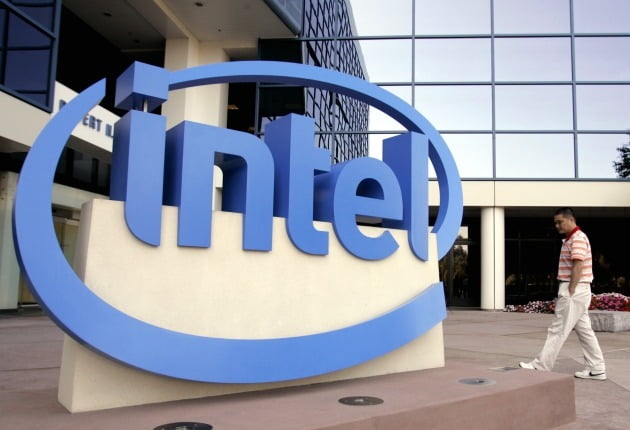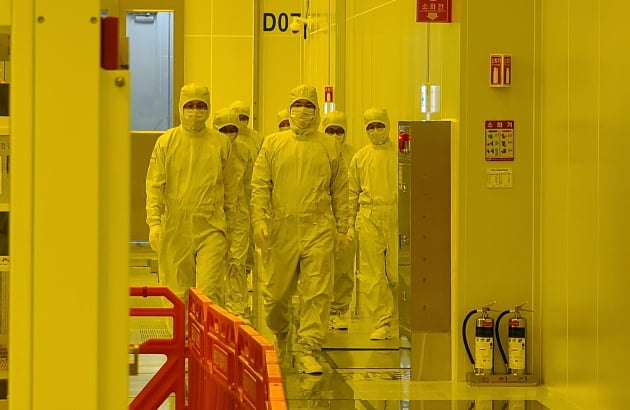“If you invest in our country, we will give you subsidies and tax benefits.”
Governments around the world are sending’love calls’ to Samsung Electronics, a representative Korean company. Building a state-of-the-art semiconductor factory in their own country will provide trillions of benefits. Following the U.S. and Japan, which started ‘courtship’ movements in earnest since last year, they have recently launched the EU (European Union). The’semiconductor shortage’ phenomenon started in the automobile industry is largely affected. He said he felt that the entire industry could be shaken if semiconductors, called’industrial rice’ and ’21st century oil’, were not procured in a timely manner.
EU (European Union), “Samsung Electronics Semiconductor Factory Should Be Attracted”
Bloomberg, an economic telecommunications company, said on the 11th (European local time), “The EU is pursuing a project to build a state-of-the-art semiconductor plant of 10nm or less in EU countries.” It is aimed at lowering the dependence of the US and Asia on semiconductors in relation to etc.”
EU Commission flag. yunhap news
–
Currently, the EU is promoting a plan to invest up to 50 billion euros (about 67 trillion won) in the semiconductor industry led by Germany and France. According to Germany’s leading daily newspaper Frankfurt Algemaine Chaitung (FAZ), European governments plan to provide about 20-40% of the investment to companies through subsidies.
Locally, Samsung Electronics is being discussed along with TSMC in Taiwan as a major target company. Bloomberg reported that “the EU is considering the participation of Samsung Electronics and TSMC as a top priority.” An official from the French Ministry of Finance said at a briefing that “TSMC and Samsung Electronics are global companies that can manufacture the most innovative semiconductors,” and “It has not been decided yet, but they can also participate in projects promoted by the EU.”
The EU Commission did not give an official response to this, and Samsung Electronics did not give any answer. TSMC told Bloomberg that “the possibility is not ruled out, but there are no specific plans.”
The EU’s active move is due to the lack of semiconductor production facilities in the region. In the EU, there are many companies that have strengths in automotive semiconductors and analog semiconductors, such as NXP in the Netherlands, Infineon in Germany, and STMicro in Switzerland, but it is known that there are not many production plants. This is because these companies have reduced their own production over the past 20 years and preferred to’outsource’ chip production to foundries such as TSMC and UMC in Taiwan.
The problem came from the end of last year when the demand for automotive semiconductors suddenly increased. NXP and Infineon placed orders from foundry companies to increase production of automotive semiconductors. However, the production lines of foundry companies such as TSMC and UMC were already full. This is because Apple, Nvidia, Qualcomm, and AMD have placed orders for APs (application processors) for smartphones, CPUs (central processing units) and GPUs (graphics processing units) for smart phones first to TSMC and UMC. Automotive semiconductor companies are unable to supply products as customers want. As a result, global automakers such as Volkswagen and GM have entered’production cuts’.
In the US, “I will give you a subsidy and cut taxes.”
The US government is more active. Joe Biden’s US administration is making resolving the semiconductor shortage that has hit the global automotive industry as a’top priority’. “The Biden administration is looking for a potential bottleneck in the supply chain,” White House spokesman Jen Saki said at a briefing on the 11th (US local time). “To do more now, we are working with key industry stakeholders and trading partners. We are actively cooperating,” he said. The White House said President Biden will sign a pan-government executive order in the coming weeks to comprehensively examine the issue of the supply chain for critical supplies.
This is because a shortage of semiconductor supplies is causing production disruptions, such as stopping factories by major US automakers. General Motors (GM) extended production cuts at its three North American plants, which started this week, to at least mid-March, and the second plant in Bupyeong, Korea, is only in operation at half the scale.
 –
–
Intel headquarters in Santa Clara, California, USA. yunhap news
–
US semiconductor makers also sent letters to President Biden asking for support for domestic semiconductor production, Bloomberg reported. 21 CEOs of US semiconductor companies such as Intel, Qualcomm, and AMD asked President Biden to “submit substantial financial support for semiconductor production incentives in the form of subsidies or tax credits.” According to the letter, the share of U.S. companies in global semiconductor production has declined from 37% in 1990 to 12% in recent years, to a third.
The risk of overseas investment by Samsung Electronics is not too small.
Samsung Electronics’ concerns are growing. Samsung Electronics is building its latest semiconductor production plant in Pyeongtaek, Gyeonggi Province. Plant 1 (P1) has been completed, and a state-of-the-art foundry and memory semiconductor production line are being built in Plant 2 (P2). Last year, the third plant started construction. Samsung Electronics has also secured sites for factories 4~6. It is analyzed that Samsung Electronics has already invested more than 50 trillion won in Pyeongtaek, considering that a high-tech factory costs about 30 trillion won. It is likely that more than 100 trillion won will be spent in the future.
 –
–
Samsung Electronics executives inspecting the EUV foundry line in Pyeongtaek, Gyeonggi Province. Provided by Samsung Electronics
–
Of course, the need for overseas production facilities is not too small. With the spread of the new coronavirus infection (Corona 19) and the spread of’national priority’ in the aftermath of the US-China trade dispute, countries around the world are increasing the benefits of their own production facilities. Building factories in the US and EU, where major customers of Samsung Electronics are concentrated, is also evaluated as a factor that can reduce costs. As Taiwanese TSMC, which is competing in the foundry market, recently actively embarked on the construction of overseas production facilities, the need for Samsung Electronics to move from the perspective of’checking’ has increased.
It is busy moving under water. It is known that Samsung Electronics is demanding benefits such as tax cuts from US local governments in exchange for investing about 20 trillion won. Reuters reported on the 5th that Samsung Electronics announced the possibility of expanding a foundry plant worth about 17 billion dollars (about 19 trillion won) in Austin, Texas, and requested that the tax reduction of 85.5 million dollars (about 900 billion won) be reduced over the next 20 years. Reported. It is reported that Samsung Electronics has explained that it can create 1800 jobs over the next 10 years, requesting tax reduction. If the Austin Foundry plant expansion is confirmed, construction is expected to start in 2Q12 and start operation in 4Q2023.
Nevertheless, there is a reason it is difficult for Samsung Electronics to make a decision easily. This is because there are many risk factors that Samsung has to bear. First of all, when Samsung Electronics builds a factory in the US or EU, no one can guarantee that orders will come in that much. In relation to the expansion of the US foundry plant that Samsung Electronics is pursuing, there are also observations that orders from US Intel and others will be smaller than expected. Intel has announced that it will increase the use of external foundries, but has professed “most of it will be produced by itself” regarding its core product, the central processing unit (CPU).
As mentioned earlier, it should also be taken into account that Samsung has made full-scale domestic investment since last year, such as investing 10 trillion won in a foundry line using EUV (extreme ultraviolet) exposure equipment for P2. The possibility of’over-investment’ cannot be ignored. Samsung Electronics also has a painful experience in the past. In December 2012, it announced that “We will spend $3.9 billion (about 4.3 trillion won) to expand the Austin Foundry plant,” a typical case where Apple, a major customer at the time, was in trouble because it moved outsourcing to TSMC.
 –
–
A view of Samsung Electronics’ Pyeongtaek semiconductor plant. Hankyung DB
–
Samsung Electronics’ net cash is 104 trillion won. “It’s not enough, but that doesn’t mean that you’re overflowing with cash.” This is because Samsung Electronics has professed “will push for a large-scale merger and acquisition (M&A) within three years.”
Considering the market caps of European semiconductor companies such as NXP, ST Micro, and Infineon, which are being discussed as targets for M&A, a real shot of at least 30 trillion won and up to 60 trillion won is needed. Excluding this, it is estimated that 50 trillion won is now available for investment in semiconductor facilities. If we are shaken by the requests of’super power’ such as the US and the EU, there may be a situation where the money can not be used where it should be spent.
A former president of Samsung Electronics explained, “Semiconductors are an industry in which’sufficient funds’ is essential,” and said, “Companies that have entered the semiconductor business must make large-scale investments at the most accurate timing to survive.”
Reporter Hwang Jeong-soo [email protected]
–

:strip_icc():format(jpeg):watermark(kly-media-production/assets/images/watermarks/liputan6/watermark-gray-landscape-new.png,45,304,0)/kly-media-production/medias/3286293/original/094012600_1604459199-narzo_16.jpg)